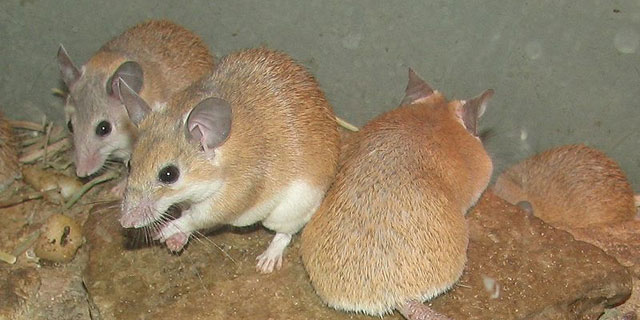
A team of biologists has published a paper revealing that the African spiny mouse is capable of totally regenerating its skin—something researchers have never seen a mammal do. The news provides experts in the field of human regenerative medicine with a novel model for future research, and hope that self-healing wounds and even limb regeneration could one day be feasible.
According to the report, published in Nature, two species of the mouse (Acomys kempi and Acomys percivali) can not only regenerate new skin, but glands, hair follicles and cartilage.
"Notably, we found that regenerative capacity in Acomys was extended to ear holes," write the paper's authors, "where the mice exhibited complete regeneration of hair follicles, sebaceous glands, dermis and cartilage." The team liken this incredible regeneration to that of salamanders, which can grow new limbs by forming a "mass of lineage-restricted progenitor cells," also known as blastema.
"Autotomy in skinks, geckos and some salamanders is well known," said Ashley Seifert, lead author on the paper and a postdoctoral student at the University of Florida's biology department. "But it is very rare in mammals, and so far we've only seen it in a few rodents that can jettison their tail."
Seifert was only directed to the species after a colleague mentioned how it appeared to self-amputate as a defence mechanism. Seifert headed to Nairobi, Kenya, where she recorded skin regeneration in the mammals for the first time in history. Ordinarily, mammals, including other mice, grow scar tissue over a wound. African spiny mice, however, appear to have developed regenerative abilities to counteract their evolutionary tactic of escaping predators by shedding lumps of flesh.
Seifert and his team discovered that the mouse's brittle skin would fall off when bitten, and that it could lose up to 60 percent of its skin in this way. After punching 4mm holes in the ears of the test mice, Seifert witnessed the extraordinary regeneration.
It is Seifert's belief that the process of regeneration cannot itself be entirely evolutionary, and he plans to investigate the genetic pathways that allow it to occur—it could be that, unlike salamanders, mammals simply have their regeneration-driving genes switched off. Working out how to switch that back on, as the spiny mouse appears to have done, could be the key to human regeneration.
"By looking at the common genetic blueprints that exist across vertebrates, we hope to find the ones that we could activate in humans," he says. "We just need to figure out how to dial the process in mammals back to do something the entire system already knows how to do." This technique is already being investigated—in 2010 researchers were able to identify and switch off a pair of genes that suppressed cell division in mice. The genetic trick, which led to muscle regeneration in the lab mice, was copied from salamanders. The occurrence has never been witnessed in the natural world among mammals until this time, though.
Advances in regenerative medicine using stem cells have already shown that hair, eye and heart cells can be restored, but to find a way to induce natural regeneration at the dermal level would mean new therapies for patients with serious wounds and burns, and maybe even limb regeneration one day. It's a long, long way off, however—although the mice were shown to regenerate cartilage, skin, hair and glands, they did not regrow muscles under the skin on their backs.
reader comments
46